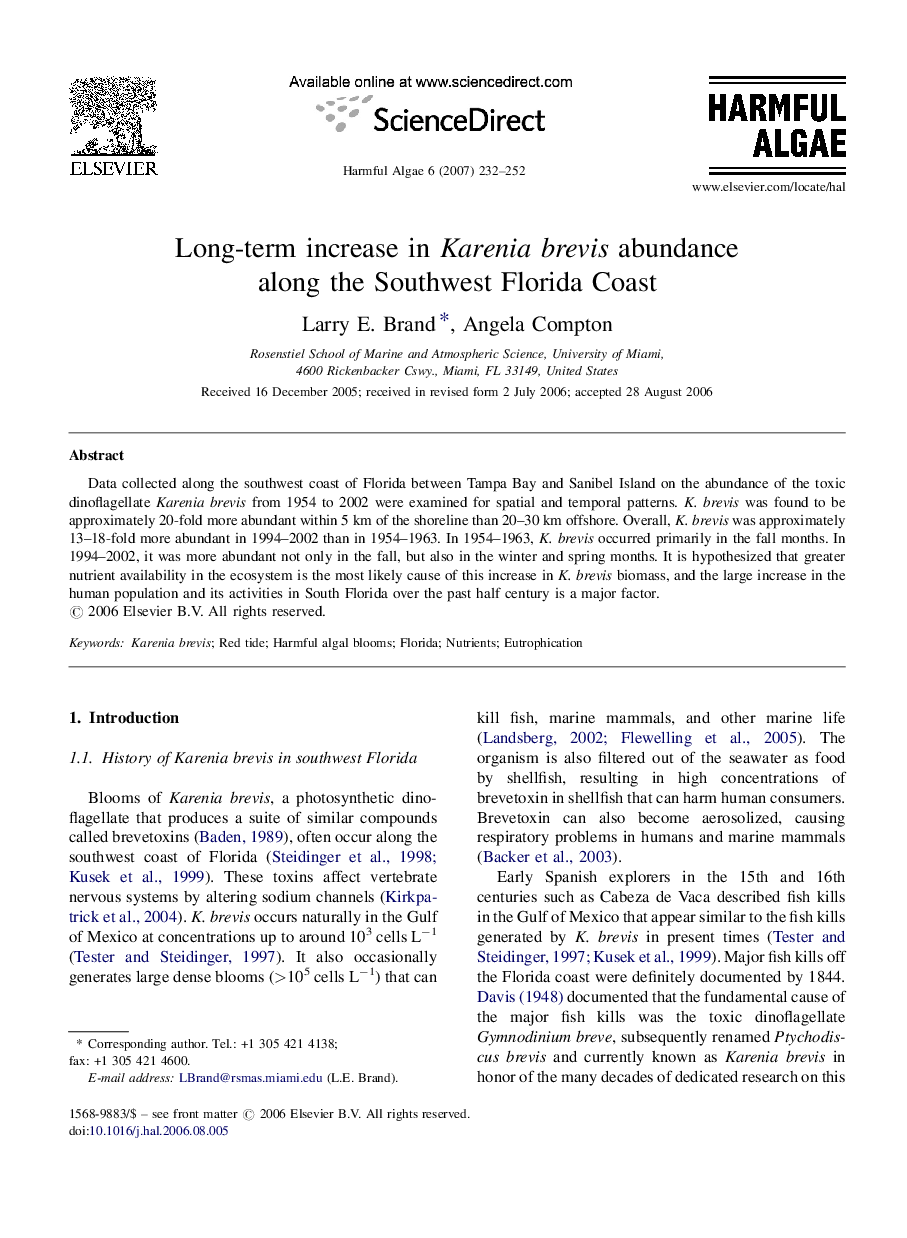| Article ID | Journal | Published Year | Pages | File Type |
|---|---|---|---|---|
| 4546258 | Harmful Algae | 2007 | 21 Pages |
Data collected along the southwest coast of Florida between Tampa Bay and Sanibel Island on the abundance of the toxic dinoflagellate Karenia brevis from 1954 to 2002 were examined for spatial and temporal patterns. K. brevis was found to be approximately 20-fold more abundant within 5 km of the shoreline than 20–30 km offshore. Overall, K. brevis was approximately 13–18-fold more abundant in 1994–2002 than in 1954–1963. In 1954–1963, K. brevis occurred primarily in the fall months. In 1994–2002, it was more abundant not only in the fall, but also in the winter and spring months. It is hypothesized that greater nutrient availability in the ecosystem is the most likely cause of this increase in K. brevis biomass, and the large increase in the human population and its activities in South Florida over the past half century is a major factor.
